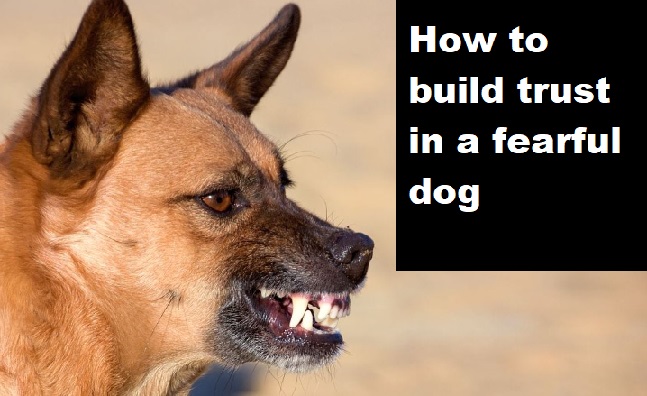Why Do Female Dogs Hump Other Female Dogs? Is It Normal?

Pet ownership is a journey filled with unexpected discoveries and curious moments. Perhaps, one such puzzling moment is witnessing your female dog humping her fellow female companion. It always raises the big question “Why do female dogs hump other dogs?” and whether this behavior is normal for dogs.
Female dogs may hump on other female dogs as a way to express dominance, and excitement and relieve stress. It also just be a learned habit or attention-seeking behavior. Other reasons female dogs hump each other include compulsive disorder, arousal, or irritated genitals. Though it may seem strange, it’s a common occurrence in the canine world.
We will delve into the various motivations behind humping behavior in female dogs. We aim to guide you in recognizing when it is a normal part of their interaction and when it might be signaling a behavioral or health issue. Join us in exploring this intriguing aspect of canine behavior to ensure your pet’s well-being and strengthen your bond with them.
Read Also: Female Dog Discharge After Mating (White, Brown, Green & Yellow)
Jump to Section
Is It Normal For a Female Dog to Hump Another Female Dog?
Yes, it is entirely normal for a female dog to hump another female dog or even hump blankets. Humping behavior is seen across the gender spectrum in the canine world and isn’t solely confined to male dogs. It’s crucial to understand that humping in dogs, often misunderstood as strictly sexual behavior, encompasses a wider range of motivations, including excitement, stress relief, dominance assertion, and even attention-seeking.
Female dogs may also hump other dogs to exhibit dominance. In a social group, dogs often establish a hierarchy. A female dog humping another can be seen as asserting herself as the ‘alpha’ or ‘top dog.’ It’s a way of maintaining social order within their pack, and it can occur between dogs of any gender.
Moreover, when it comes to play, humping can be a normal dog behavior. Playtime often involves a variety of activities like chasing, play-fighting, and yes, even humping. This doesn’t mean your dog is being aggressive or trying to mate; it’s just one of the many ways dogs engage with each other.
However, the line between normal and problematic behavior is drawn when humping becomes persistent, obsessive, or leads to dog-dog conflict. If it’s disrupting the peace of your household or your dog’s social interactions, or if it is accompanied by signs of distress, discomfort, or health changes, it’s time to consult a professional.
A veterinarian or a certified animal behaviorist can provide insights into the root cause of the behavior and suggest the most suitable approach to address it. Remember, our understanding of our pets’ actions significantly impacts their welfare and our relationship with them.
Why Do Female Dogs Hump Other Female Dogs?
In the intricate world of canine behavior, female dogs humping other females is a sight that often bewilders many pet owners. To fully understand this behavior, it’s essential to see it from a behavioral perspective, which includes a spectrum of reasons ranging from social learning to psychological responses. Let’s dive into the detailed examination of these factors.
1. Learned Habit: The Power of Early Conditioning
Dogs, like humans, are great social learners. As puppies, they mimic a myriad of behaviors to navigate their social and physical environment. Humping is one such behavior. It can start as an innocent act of playful experimentation in puppyhood. If the behavior is not curtailed or redirected during this stage, it could solidify into a learned habit extending into their adult life. This is akin to a child learning to use certain behaviors to interact with others, continuing to use those that elicit reactions or provide personal satisfaction.
2. Excitement: An Energy Outlet
Humping can also be a manifestation of pure excitement or enthusiasm in dogs. Imagine your pet seeing a new face, another dog, or perhaps their favorite human; the surge of adrenaline might lead them to express this excitement in various ways. One such method could be humping, which serves as an outlet for their overflowing energy. It’s important to note that this behavior transcends gender, appearing in both male and female dogs.
3. Compulsive Disorder: A Canine Coping Mechanism
In some situations, humping could be a symptom of a compulsive disorder. Dogs, like humans, may develop compulsive behaviors to deal with stressors, anxiety, or past traumas. Humping could evolve into a repetitive, comforting action, providing a sense of relief or distraction from their anxieties. In these instances, consultation with a veterinarian or a certified animal behaviorist is crucial to help manage this compulsive behavior.
4. Display of Dominance: The Social Dynamics
As an evolutionary pack animal, dogs tend to relate with each other in such a way that each dog is ranked at varying levels of the social hierarchy. Humping, contrary to popular belief, is not always an act of sexual nature but rather can be a display of dominance or control. A female dog humping another female might be asserting herself as the ‘alpha’ or ‘top dog’ within their social group. This behavior tends to be more prevalent among dogs that have not been spayed.
5. Boredom or Stress Relief: An Emotional Response
Just like humans, dogs also experience emotions like boredom and stress. When they lack adequate physical exercise or mental stimulation, they may resort to behaviors like humping as a form of self-entertainment or stress relief. This act then becomes a physical manifestation of their psychological state, serving as an outlet for their pent-up energy.
6. Irritation of Their Private Part: A Medical Alert
Sometimes, the reasons behind humping are rooted in physical discomfort or medical issues. Conditions such as urinary tract infections, allergies, dermatological problems, or parasites can cause itching or irritation in a dog’s private parts. The act of humping may provide temporary relief to this discomfort, which is why it’s important to consult a veterinarian if your dog’s humping is accompanied by other signs of discomfort or distress.
7. Sexual Stimulation: The Basic Instinct
Although not every act of humping is tied to sexual behavior, it is undeniably one aspect of it, especially in dogs that are not spayed or neutered. Hormones can drive a dog to hump other dogs, and this behavior can extend to dogs of the same sex. However, it’s essential to distinguish this from the other non-sexual motivations that we’ve discussed above.
8. Attention Seeking Behavior: A Call for Interaction
Lastly, humping could simply be a dog’s way of seeking attention. Dogs are intelligent creatures, and they quickly learn what actions draw reactions from their human companions. If humping elicits laughter, shock, or any form of engagement, they might repeat the behavior to seek more interaction.
Why does a fixed female dog hump another female dog?
When it comes to a fixed (spayed) female dog humping another female dog, the behavior may not be directly connected to reproductive or dominance instincts. Spaying a dog eliminates the production of certain hormones, which usually reduces behaviors linked to sexual arousal. However, humping can persist for other reasons.
To begin with, it could be an ingrained habit. Even after being spayed, a dog may continue to hump due to prior behavioral patterns. Essentially, if a dog was used to humping before being spayed, she may continue doing so after the operation. This behavior might be reinforced if it gets the dog’s attention or appears to help in certain social situations.
Perhaps, it could be related to overexcitement or stress. Dogs sometimes hump when they are overly excited or anxious as a way to release pent-up energy or stress. It becomes a coping mechanism. For instance, a fixed female dog might hump another dog during a particularly exciting play session, when meeting new dogs, or in unfamiliar environments.
The presence of medical issues can contribute to such behavior. In some cases, excessive humping can indicate a medical problem, such as a urinary tract infection or skin allergy. These conditions can cause discomfort or itching, and dogs may respond by humping. If a spayed female dog is humping excessively or in conjunction with other symptoms, a veterinary consultation would be recommended to rule out any potential health issues.
Should you let female dogs hump each other?
Deciding whether to allow dogs to hump each other is a nuanced decision, based on a variety of factors such as the dogs’ reactions, the specific situation, and potential health or behavioral issues.
One key aspect is the response of the dog being humped. If both dogs seem comfortable and content, with no signs of distress, fear, or aggression, then it might be seen as a normal part of their interaction. In a play setting, humping can be a common behavior as long as it doesn’t escalate to aggression or one dog doesn’t seem annoyed or threatened. If the recipient dog shows signs of discomfort, such as trying to get away, growling, or showing other signs of stress, then the behavior should be interrupted.
The setting where this dog’s behavior is exhibited also matters. If it’s in a private setting and both dogs are familiar with each other, it might be less concerning than in a public place or with unfamiliar dogs. Humping behavior can provoke negative reactions from other dogs or people in public, leading to potentially dangerous situations.
On the other hand, if humping behavior becomes excessive or obsessive, this could be indicative of a deeper issue, such as a behavioral problem or health concern. Overexcitement, anxiety, or stress can lead to excessive humping.
Besides, medical conditions, such as urinary tract infections or skin allergies, could cause discomfort that a dog might try to alleviate through humping. In these cases, intervention is needed to identify and address the underlying issue, potentially with the help of a veterinarian or a professional dog behaviorist.
Allowing female dogs to hump each other depends on the specific circumstances. As a dog owner, it’s crucial to ensure that any interaction between dogs is safe, respectful, and mutually comfortable. Also, excessive or obsessive humping behavior should not be ignored as it could signal a deeper issue that needs to be addressed.
Also Read: Can A Male Dog Penetrate Or Mount A Female Not In Heat?
How Do I Stop My Female Dogs From Humping On Each Other?
Here are five ways you can discourage humping behavior in your female dogs:
1. Discourage This Negative By Obedience Training
Obedience training typically begins with teaching your dogs basic commands such as ‘sit’, ‘stay’, ‘come’, and ‘leave it’. These commands can be used to stop a behavior you don’t want, like humping. For example, if your dogs begin to hump each other, you can use the ‘leave it’, ‘no’, ‘sit’, or ‘off’ command to get them to stop. It’s important to be consistent in using these commands and patient as your dogs learn to associate the command with the desired action.
Integral to obedience training is the concept of positive reinforcement, which is rewarding your dogs when they obey your commands or exhibit desirable behaviors. When your dogs stop humping each other on command, give them a treat, praise them, or play a game they love. This encourages them to repeat the behavior that led to the reward and prevents them from indulging in negative behaviors.
2. Increased Exercise
Dogs may hump due to pent-up energy. Increasing their physical activity can help reduce this energy and minimize humping behavior. Consider longer or more frequent walks to provide both exercise and mental stimulation for your dogs. Aim for at least 30 minutes to an hour of walking, adjusted based on your dog’s age, breed, and fitness level.
Additionally, engage in playtime with interactive toys or games like fetch to further burn off energy and strengthen the bond between you and your dogs. By incorporating regular exercise, you can help decrease humping behavior and promote a healthier lifestyle for your pets.
3. Use Distractions
Redirecting your dogs’ attention can be an effective way of stopping unwanted behavior. This requires vigilance and timely intervention. By engaging in mentally stimulating activities or offering him fun toys, you can quickly change the focus. This method capitalizes on the dogs’ natural propensity for curiosity and immediate reward, and it can be very successful when done consistently.
4.Consider Spaying The Bitch
If your female dogs are not spayed, hormonal influences can contribute to increased humping behavior. Spaying, which involves the removal of the ovaries and uterus, can help reduce hormone-driven behaviors and may decrease the frequency of humping.
However, it’s important to note that humping is not solely a sexual behavior, and spaying may not completely eliminate the behavior in all cases.
5. Consult with a Professional
If the humping is persistent and you’re unable to manage it with these tips, consider consulting with a professional dog trainer or a veterinarian, especially if you suspect a medical condition. They can provide personalized advice based on your specific situation and your dogs’ personalities.
Final Thoughts
It is entirely normal for a female dog to hump another female dog. Humping behavior in dogs is not solely limited to males and can occur for various reasons, including excitement, stress relief, dominance assertion, attention-seeking, play, and even learned habits. Female dogs humping each other can be a display of dominance or a way to establish social order within their pack.
While humping between female dogs is generally considered normal, it’s important to pay attention to the context and the dogs’ reactions. If the behavior becomes persistent, excessive, leads to conflicts with other bitches, or happens often in a public setting, it’s advisable to consider obedience training or just seek professional guidance from a veterinarian or certified animal behaviorist.
Understanding the motivations behind humping behavior and ensuring the well-being of our pets is crucial for building a harmonious relationship with them. By providing appropriate training, exercise, and distractions, we can help manage humping behaviors in female dogs and promote a healthy and balanced life for our furry companions.
Read related posts about





